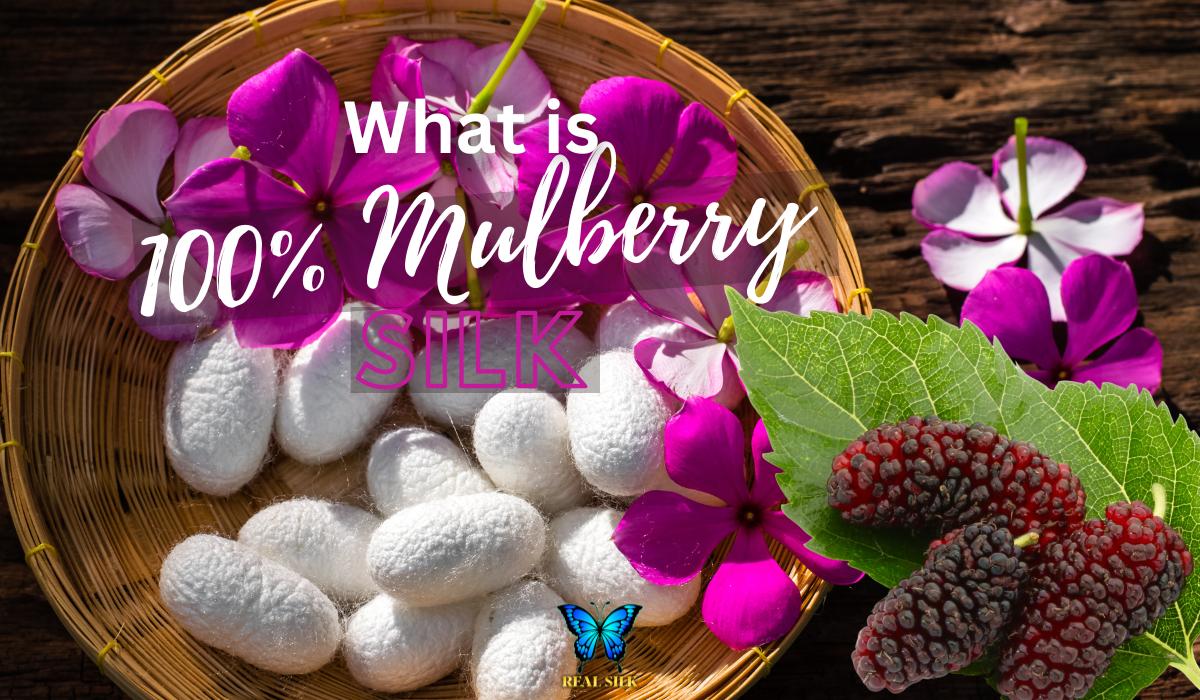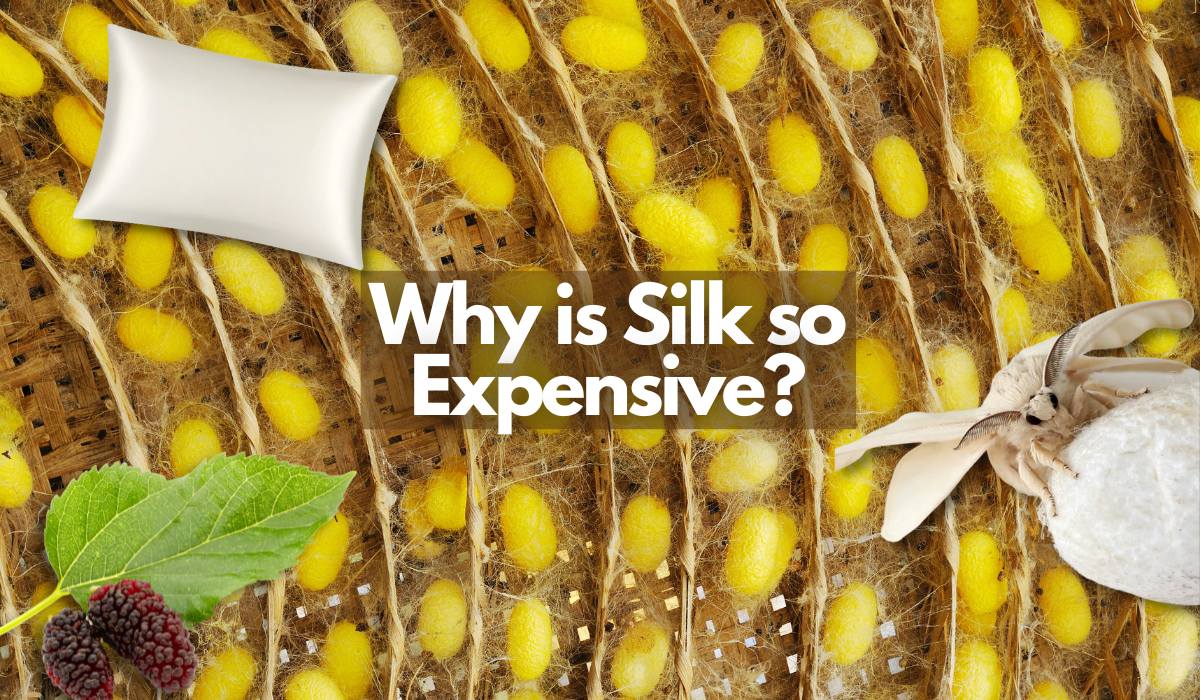
What Is Mulberry Silk and What Makes It Special? Silk Quality and Types Explained.
This blog post explains what is Silk, what is Mulberry Silk in particular, what are other silk types, what are the common silk weaving techniques and their distinctive features and more. In addition, we'll discuss silk grading system and silk density measured in Momme. Learn everything you need to know about mulberry silk and why it stands out from other fabrics.
What is Silk? How was it Discovered?
Silk is a natural protein fiber that is produced by certain insects, such as silkworms, to make cocoons and webs. Silk is known for its smooth, soft, and lustrous appearance, and it is also strong, durable, and hypoallergenic.
The use of silk dates back to ancient China, where it was first developed and used for clothing, textiles, and other purposes. According to legend, silk was discovered by the Chinese Empress Xi Ling-Shi, who was taking a leisurely stroll in her garden when a cocoon fell into her cup of tea. As she tried to retrieve the cocoon, she noticed that it was unraveling, and she realized that the long, fine thread could be used to make fabric.
The exact date of the discovery of silk is not known, but it is generally believed to have occurred around 2500 BCE. The production of silk was initially a closely guarded secret in China, and it was not until the Han Dynasty (202 BCE to 220 CE) that silk began to be traded with other countries. Today, silk is produced in many parts of the world, but China remains the largest producer of silk.

What is Silk Fabric?
The most well-known type of silk is made by the larvae of the mulberry silkworm, which feed on the leaves of mulberry trees. The silk is produced by the silkworms to form cocoons around their bodies. When the silkworms are ready to transform into moths, they emerge from the cocoons and the silk is harvested.
Silk fabric is made by spinning the raw silk fibers into a continuous thread and then weaving or knitting the thread into a fabric. It is often used in the production of clothing (shirts, dresses), bedding (bedding sets, pillowcases), and home decor items (tablecloths and curtains).
What are Different Silk Weaving Techniques?
There are several different types of silk weaving techniques, each of which produces a unique type of silk fabric. Some examples include:
-
Charmeuse: This type of silk is soft and lustrous, with a fluid drape. It is made by using a high-twist thread and a satin weave, which creates a smooth and shiny surface on one side of the fabric.

-
Satin Crepe: Silk crepe back satin is a luxurious fabric that has a shiny satin finish on one side and a matte crepe finish on the other. Because it stretches when pulled in the bias direction, it is often used for bias-cut garments. This type of silk is expensive, but it has an exquisite drape and can be used to create sumptuous dresses, blouses, and special occasion garments.

-
Chiffon: This type of silk is lightweight and sheer, with a soft, flowing drape. It is made by using a high-twist thread and a very loose weave, which creates a delicate and transparent fabric.
-
Dupioni: This type of silk is made from the cocoons of two silkworms that have spun their cocoons together. It has a rough, textured surface and a slubby appearance.
-
Organza: This type of silk is extremely lightweight and sheer, with a crisp, transparent finish. It is made by using a high-twist thread and a tight weave, which creates a stiff and stiff fabric.
What is Mulberry Silk?
Mulberry silk is a type of silk that is made from the cocoons of mulberry silkworms. It is considered to be the highest quality silk because of its strength, softness, and shimmering appearance.
What are Other Silk Types?
There are several different types of silk, including:
-
Mulberry silk: This is the highest quality silk, made from the cocoons of silkworms that are fed a diet of mulberry leaves. It is known for its strength, softness, and shimmering appearance.
-
Tussah silk: This type of silk is made from silkworms that feed on a variety of leaves, including oak and elm. It is generally coarser and less lustrous than mulberry silk.
-
Eri silk: Also known as "peace silk," this type of silk is made from the cocoons of eri silkworms, which do not need to be killed in order to obtain the silk. It is known for its softness and durability.
-
Bombyx silk: This type of silk is made from the cocoons of the domesticated silkworm, Bombyx mori. It is the most common type of silk used in the textile industry.
-
Wild silk: This type of silk is made from the cocoons of wild silkworms, which live in the forests and feed on a variety of leaves. It is generally coarser and less lustrous than mulberry silk.
-
Noil silk: This type of silk is made from the short fibers that are left over during the silk-making process. It has a matte finish and a slightly nubby texture.
What Makes Mulberry Silk Special?
But what makes mulberry silk so special? For starters, it is the only type of silk that is produced from silkworms that are fed a diet of mulberry leaves. This diet allows the silkworms to produce a more consistent and longer strand of silk, which in turn results in a smoother and more durable fabric.

In addition to its strength and softness, mulberry silk is also hypoallergenic and temperature-regulating, making it a great choice for people with sensitive skin or who are prone to allergies.
One of the most popular uses for mulberry silk is in the production of pillowcases. Mulberry silk pillowcases have a number of benefits for your skin and hair. Because silk is a natural protein fiber, it can help to reduce the appearance of fine lines and wrinkles on the skin. It is also gentle on the hair, helping to reduce frizz and breakage.
In conclusion, mulberry silk is a luxurious and high-quality fabric that is perfect for a variety of uses. Its strength, softness, and hypoallergenic properties make it a great choice for those looking to invest in a long-lasting and comfortable product.
What is 6A Grade Mulberry Silk?
6A grade mulberry silk refers to the highest quality of mulberry silk. The grading system for mulberry silk is based on the thickness and uniformity of the silk fibers. 6A grade mulberry silk has the finest and most consistent fibers, making it the most luxurious and expensive type of mulberry silk.
In the mulberry silk grading system, the grades range from 3A to 6A, with 6A being the highest quality. 6A grade mulberry silk is considered to be the best choice for a variety of applications, including bedding, clothing, and home decor items. It is known for its smooth and silky feel, and it is also highly durable and long-lasting.
If you are considering purchasing mulberry silk products, such as a mulberry silk pillowcase, it is important to look for items that are made from 6A grade mulberry silk. This will ensure that you are getting the highest quality and most luxurious silk available.

What is Silk Momme?
Silk momme is a unit of measurement used to determine the weight of silk fabric. It is used to compare the weight and density of different types of silk fabrics, and it is typically used to measure silk fabrics for bedding, such as sheets and duvet covers.
One momme is equal to 3.75 grams per square meter of fabric. A higher momme number indicates a heavier and denser fabric, while a lower momme number indicates a lighter and more sheer fabric.
Silk momme is often used to determine the quality of silk fabrics. Generally, silk fabrics with a higher momme number are considered to be of higher quality, as they are typically heavier, denser, and more durable. However, the optimal momme number will depend on the intended use of the fabric and the personal preferences of the consumer.

What is 22 Momme Silk?
22 momme silk is a type of silk fabric that weighs 22 grams per square meter. It is considered to be a medium-weight silk fabric, and it is often used for sleepwear and bedding, such as sheets, pillowcases and duvet covers.
Silk fabrics with a momme weight of 22 are typically more durable and heavier than lighter weight silk fabrics (16 or 19 MM), but they are still relatively lightweight and have a smooth, soft feel. They are also less sheer than lighter weight silk fabrics, and they have a slightly more structured drape.
The optimal momme weight for a silk fabric will depend on the intended use of the fabric and the personal preferences of the consumer. Some people may prefer a lighter weight fabric for its sheerness and drape, while others may prefer a heavier weight fabric for its durability and structure.
For example, some people will find 25 or 30 Momme silk pillowcases to be too thick, where 22 Momme is the perfect sweet spot.
Where can You Find the Highest Quality Silk Pillowcases/Bedding?
You can find the highest quality Mulberry Silk Pillowcases and bedding, made from 22 Momme 6A grade silk, Luxurious Satin Crepe silk type on our website. Explore our Silk Pillowcase, Silk Bedding, and Silk Pyjamas Collections.

In Summary.
Silk is a natural protein fiber that is produced by certain insects. Mulberry silk is a type of silk that is made from the cocoons of mulberry silkworms. It is considered to be the highest quality silk. Silk is known for its smooth, soft, and lustrous appearance, and it is also strong, durable, and hypoallergenic.
Silk momme is a unit of measurement used to determine the weight of silk fabric, 22 MM being the sweet spot for most silk products. 6A grade mulberry silk refers to the highest quality of mulberry silk. The grading system for mulberry silk is based on the thickness and uniformity of the silk fibers. We hope you learned something new.


